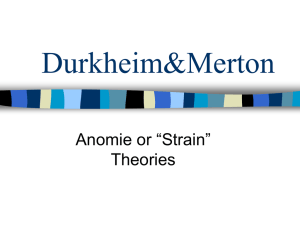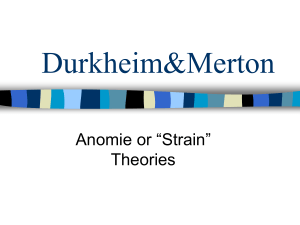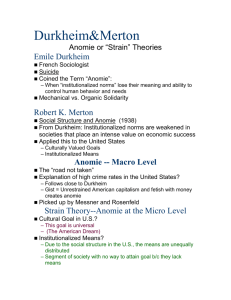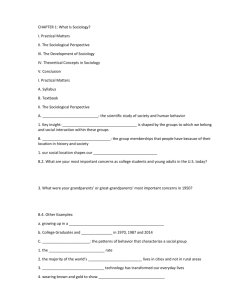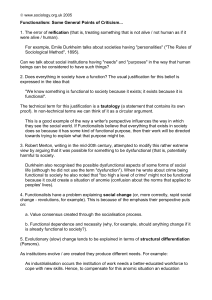Parsons - Duke University
advertisement
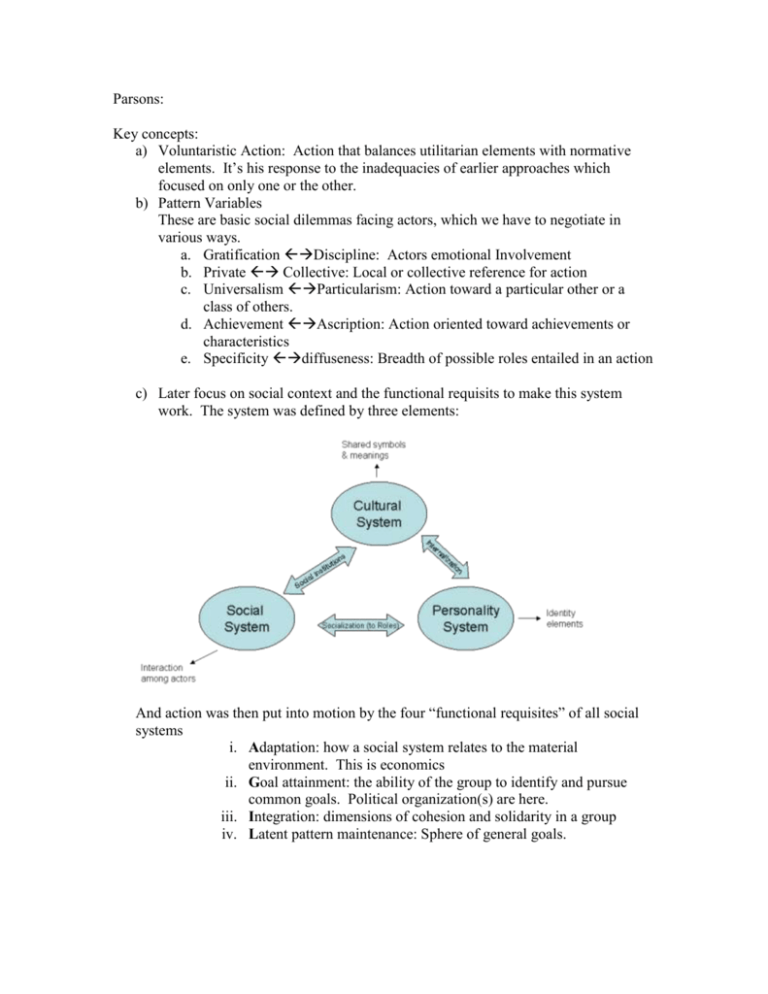
Parsons: Key concepts: a) Voluntaristic Action: Action that balances utilitarian elements with normative elements. It’s his response to the inadequacies of earlier approaches which focused on only one or the other. b) Pattern Variables These are basic social dilemmas facing actors, which we have to negotiate in various ways. a. Gratification Discipline: Actors emotional Involvement b. Private Collective: Local or collective reference for action c. Universalism Particularism: Action toward a particular other or a class of others. d. Achievement Ascription: Action oriented toward achievements or characteristics e. Specificity diffuseness: Breadth of possible roles entailed in an action c) Later focus on social context and the functional requisits to make this system work. The system was defined by three elements: And action was then put into motion by the four “functional requisites” of all social systems i. Adaptation: how a social system relates to the material environment. This is economics ii. Goal attainment: the ability of the group to identify and pursue common goals. Political organization(s) are here. iii. Integration: dimensions of cohesion and solidarity in a group iv. Latent pattern maintenance: Sphere of general goals. Position of Social theory - Should be systematic, rests on a theory of the whole social system, includes elements of social action – activity from egos point of view – must be sufficiently abstract/general to make variables direct. - Need some prerequisites o Need to work out the elements of the “action” scheme o Need to figure out the functional requirements of social systems Relates to problem of order and action o Need to figure out the “structuring” elements of the system Includes institutionalization Differentiation - Main conceptual components o Structure of the situation – Social theory From point of view of actor From point of view of system o Culture tradition -- anthroplogy o Institutional structure -- sociology o Motivations – psychology Structural Components of the Social System Pattern-alternatives of value-orientation Goal: “We are concerned with analyzing the structure of an actor’s relations to social objects in order to identify the points of reference which define the strategically significant limits of variability of this category of orientations.” (p.414) <then he works through the pattern variables – see above> Outline of the Social System Think of these as elements in the “space” of ways of thinking about social systems. Structural and functional modes of analysis After talking about structure and function he says: “Our present concern is with their [structure & function] analytical meaning; we whish to state in a preliminary way a fundamental proposition about the structure of a social system – namely, that their structure as treated within the frame of reference of action consists in the institutionalized patterns of normative culture.” (422) Dynamic modes of analysis -A dimension around equilibrium: when does/is the system stable -A dimension around how the system itself changes. Hierarchy of relations of control (and the list goes on). Punch line: ‘The main guiding line of the analysis is the concept that a complex social system consist of a network of interdependent and interpenetrating subsystems, each of which, seen at the appropriate level of reference , si a social system in its own right, subject to all the functional exigencies of any such system relative to its institutionalized culture and situation…” (p.431) Manifest & Latent Functions What the distinction does for us: a) Clarifies the analysis of seeming irrational social patterns b) Directs attention to theoretically fruitful fields of inquiry c) Represents a key discovery for sociology d) Prevents naive moral judgments Social Structure and Anomie Here RM puts some teeth into the notion of Anomie. The key focus is on the ways in which socially valued goods are acquired. This then turns os toward two key dimensions: a) culturally defined goals … held out as legitimate objectivies for all. These lead to aspirations. b) Modes of reaching the goals – a way to define/defend the means for a given end. Note these need not correspond: “no society lacks norms governing conduct. But societies do differ in the degree to which the folkways, mores and institutional controls are effectively integrated with the goals which stand high in the hierarchy of cultural values.” (p.462) This mismatch, particularly when the ends are strong but the means weak, leads to a sense of anomie. Responses: Accept Goals Accept Means Conformity Reject Means Innovation Reject the entire frame: Rebellion Reject Goals Ritualism Retreatism
